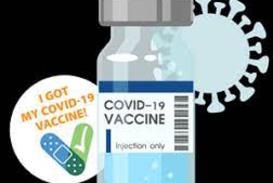ANTIBIOTICS: 6 PIVOTAL CARE AND COST CONSIDERATIONS
by John G. Baresky on 11/12/20
Learning about antibiotics leads to better decisions and healthy outcomes
Antibiotics are wonderfully effective therapies used to treat an array of illnesses but they have their limitations and precautions as all medications do. Medical professionals are careful in their assessment of patients and their clinical decision making that leads to them prescribing or not prescribing an antibiotic. These are important considerations that clinicians and consumers share when it comes to the use of antibiotics:
1) Bacterial resistance
The
overprescribing of antibiotics can lead to bacterial pathogens becoming more resistant
to them. The natural biosystems within bacteria can become conditioned to
and/or build their own natural defenses against antibiotic agents. This can reduce the effectiveness of antibiotics. Medical professionals
are well aware of this as it impacts their choice to prescribe or not prescribe
an antibiotic –and it weighs in on their specific choice of antibiotics when
they do choose to prescribe them.
2) The differences between bacterial and viral pathogens
Antibiotics are
not effective against viruses. Even though the symptoms of a viral infection
may mirror those of a bacterial infection, the differences between bacterial
and viral pathogens prevent the use of antibiotics to treat viral
infections. Medical professionals often use various diagnostic tests and other evaluation
methods to discern if a patient is ill due to bacterial or viral pathogens and
choose their treatment course of action accordingly.
3) When it comes to antibiotics sharing is not caring!
It is not safe or effective to share antibiotics. Medical professionals prescribe antibiotics according to the specific patient they have diagnosed. If a patient shares their medication with another person that has the same symptoms, various issues can arise. Even if their symptoms are the same, each person may be infected by a different pathogen and the antibiotic prescribed will not be effective for the other sick individual.
Another concern is the other person may not be able
to tolerate the medication prescribed to the patient diagnosed by the clinician
or they may also be on another medication which could have a harmful
interaction with the antibiotic.
4) Therapeutic adherence is essential to ensure antibiotic effectiveness
Patients taking antibiotics need to consume them according to the instructions of the medical professional that prescribed them. The doses of therapy should be taken at the precise hourly or daily intervals directed by the prescribing clinicians plus they should be taken in accordance with any other guidance that accompanies those instructions (take with food, abstain from alcohol, etc.).
The complete course of therapy prescribed needs to be completed. If a patient fails to consume the entire quantity of prescribed medication because they feel better, symptoms may return as the bacterial pathogen being treated is able to rebound with the result being their illness is prolonged and could require further care.
5) The negative economic impact of inappropriate antibiotic use
Misuse of antibiotics increases costs. If resistance to antibiotics increases, their effectiveness declines which means they may need to be prescribed at greater strengths or rendered ineffective to the extent that other more expensive antibiotic treatment options need to be used first.
These issues also apply to when an individual takes antibiotics prescribed to someone else and they fail to be effective or the consequences of drug interactions demand further care.
6) Pharmacists are important resources
Frequent prescribers of antibiotics are nurse practitioners and medical doctors. They can provide patients with ample information about the antibiotic therapy they are prescribing them. If a patient has further questions about the medication, they can also talk with the pharmacist who dispenses the antibiotic prescription medication for them.
Antibiotics are some of the most frequently dispensed medications at retail pharmacies. If necessary, the pharmacist can further consult with the prescribing clinician so the patient's questions are completely answered to their satisfaction.
Maximizing the benefits of antibiotics
Through understanding these 6 basic points about antibiotics, consumers, patients, medical professionals and payers all benefit from the clinical and economic attributes of antibiotics. Pharmaceutical manufacturers and healthcare researchers are continuing to develop better antibiotic therapies to treat a wider array of illnesses. The value of old and new antibiotic medications will continue to increase if they are used appropriately.

